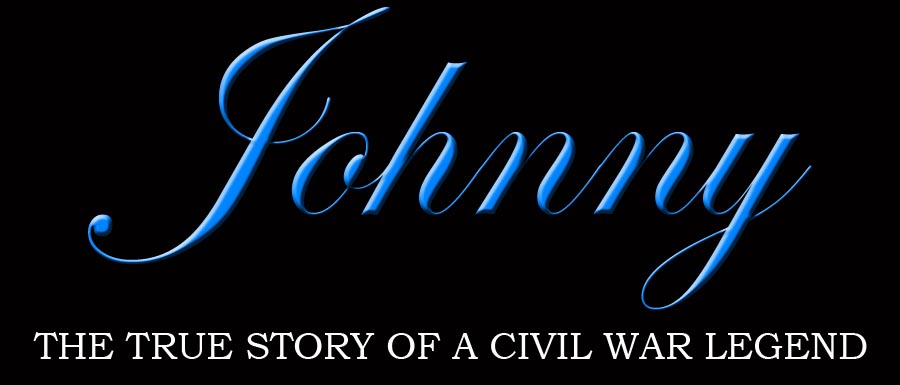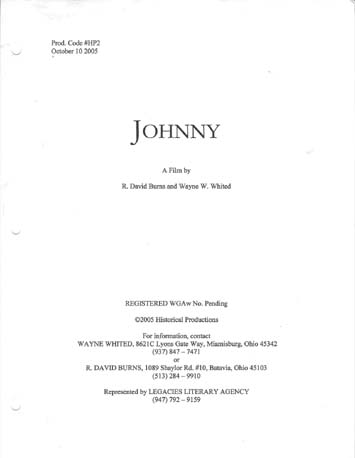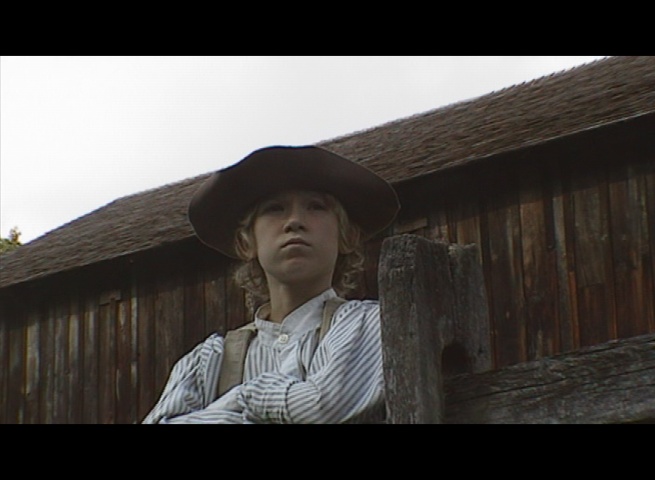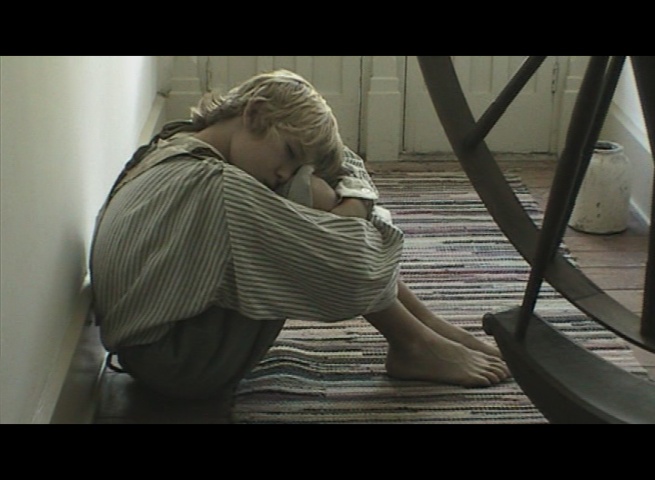

PART TWO - A NEW FORM
Five years had passed since David and Wayne had looked at the Johnny screenplay, having moved onto other interesting projects to pursue. But in the Spring of 2005, everything changed.
"I knew at this time there was no way I could do Johnny as a full motion picture," David states. "However, by this time we were both considering bring Historical Productions up to the point where we could produce our own independent productions without the need for outside production facilities. And by this time it was possible. Technology has moved to the point where practically anyone can make a film." And the first choice to test their new independence was obvious. "We both had wanted to make a good Civil War film for a very long time," says Wayne. "And Johnny was the perfect way to get it all started."
"We had both talked about moving into Documentary filming for a few years before this point, but we didn't like the current trend and format that most documentaries have taken over the last decade and a half. Ever since The Civil War aired back in 1990, every documentary from that point on has taken the same format to copy it. You show pictures, you listen to people who call themselves experts talk, and then you show more pictures. Maybe sometimes you throw in a few specially filmed shots like they did in Civil War Journal but even then they still look like shots filmed at a reenactment and not motion picture quality. We wanted to change that. We wanted to do something completely different."
Now having decided that Johnny would take the form of a Documentary, it was up to the producers to find the perfect man (or boy in this case) to play the central role of Johnny Clem. As circumstances happen, it was by accident. "I was coaching my nephew Ryan's baseball team in the Spring and Summer of 2005 when we had three new kids join the team," states David. "And the first one to walk in was a boy by the name of Cody Piper. At first sight I knew he was perfect for the part. He had the right look, the right height, the right weight, blond hair, same age. He was just perfect. Some people search for months for the right person to play a part and I have him walk in off the street." David waited a few weeks before approaching Cody, but then certain he was right he asked the boy's parents for permission to cast their son. As it happened, they agreed and Cody was on his way to be a star.
Pre-production began in July 2005 with writing the screenplay for the new documentary. The two producers had decided that they wanted to do something completely different with this project - a documentary that is completely filmed as a motion picture, with linking narration. This would be Johnny Clem's version of the story, told through his eyes as he documents his adventures in a journal. There would be two voices heard - that of the narrator and that of Johnny himself. There would be no interviews and no experts to tell you what happened. Everything would be up on screen, as if you were right alongside Johnny during his time in the Civil War. A date was set to begin production - August 19, 2005.



Just as they had set, filming began right on schedule. Despite pre-production not being completed, many scenes to take place early in the film were shot over the course of the two day weekend, mainly centering around Johnny's early days at home in Newark. At this point only Cody had been cast, and they were working WITHOUT A SCRIPT.

The first draft of the new version was completed one month after filming had begun on September 26, 2005, bearing the provisional title Johnny:Tales of a Drummer Boy. While Johnny was the central character of this draft, it wasn't just HIS story. The story would sidestep throughout the film to tell the story of other brave boys who went to war as Drummer Boys, such as the story of Clarence McKenzie of Brooklyn, New York who had been killed before the fighting even started, and Edward Lee of Tennessee who lost his father in the war and found his home with the 1st Iowa.
While all these stories would make a great film, it was decided that they needed to concentrate on just one story - that of Johnny Clem. "I'm glad we didn't go that route," says Wayne. "It's hard enough to find one perfect kid to play a part, but to try and find five or six. It's a producer's nightmare!" It was in this draft that many elaborate scenes were added to the picture, such as the recruiting office, Madalene's death, and the train scenes. "I got an email from David after he read the rewrites. He was not happy. He told me that I'd overdone it and that there was no way we could ever find or afford a train. Keep it simple, he said!" However, these scenes would remain in the script, and eventually be filmed. The film may have grown bigger than they had originally envisioned, however they would soon discover that nothing would be beyond their grasp.
Now with a version of the script to work with and, even with the differences in story, very similar to the finished version, filming continued on October 2nd, 2005 at the Historical Village Museum in Sharonville, Ohio. These scenes consisted of exterior shots of Johnny's home in Newark, and Cody Piper was the only actor needed for this day. One interior shot was filmed as well, the shot of Johnny mourning the loss of his mother in a dark corner of his home. However, it was discovered that the interior of this house was too dark to film, and that any future scenes shot here would have to be remounted with proper lighting fixtures brought in.
Around this time, a new draft was completed for the film dated October 10, 2005. This would be the final version of the script, and would be used as the camera script for production. While some minor changes would be made to the narration and a few scenes would be added along the way, this version of the script would be used for all future filming of the project. They finally had a script to work with!
With winter approaching, production shut down for the year and preparation began for 2006, when the largest bulk of the film would be shot. The rest of the cast needed to be selected, locations scouted for, and reenactors commissioned. It would be six months before Johnny would go in front of the camera again, and the best was yet to come...



